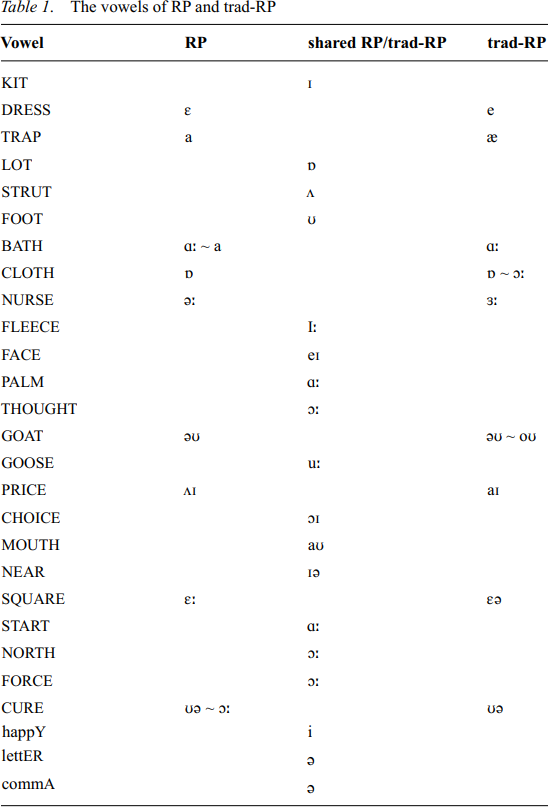


 Grammar
Grammar
 Tenses
Tenses
 Present
Present
 Past
Past
 Future
Future
 Parts Of Speech
Parts Of Speech
 Nouns
Nouns
 Verbs
Verbs
 Adverbs
Adverbs
 Adjectives
Adjectives
 Pronouns
Pronouns
 Pre Position
Pre Position
 Preposition by function
Preposition by function 
 Preposition by construction
Preposition by construction
 Conjunctions
Conjunctions
 Interjections
Interjections
 Grammar Rules
Grammar Rules
 Linguistics
Linguistics
 Semantics
Semantics
 Pragmatics
Pragmatics
 Reading Comprehension
Reading Comprehension|
Read More
Date: 2024-03-01
Date: 2023-11-23
Date: 18-3-2022
|
There is an extensive literature in which a good deal of agreement, if not absolute unanimity, can be seen in the discussion of changes in RP. There is also, however, some disagreement about precisely how the accent is to be represented, because some commentators are more inclined to hold the line on the older transcriptional and realizational forms than others. Given the fact of language change, there comes a time when certain sounds, conventionally labelled in a previous time, alter to such an extent that different symbols represent them more accurately: the phonetic symbols being absolutes, their interpretation cannot be altered to suit the new development, so that if anything is to change in the interests of accuracy and clarity it must be the label that is applied to the sound. This is especially important since transcriptions in dictionaries and English language teaching texts are invariably broadly phonemic, and if their users are to be properly served they need to be provided with transcriptions that correspond as honestly as possible to the sounds of the modern accent. The RP vowel inventory incorporates some judicious relabelling from that which is often to be seen. It contains nineteen stressed vowels,  and two unstressed vowels, /i/ and /ə/.
and two unstressed vowels, /i/ and /ə/.
RP and trad-RP share the same phonemic structure but differ in realizational (and hence labelling) particulars, and differ also occasionally in the lexical distribution of phonemes. Table 1 combines the accents in most of the lexical sets. Where there are differences, these are shown in separate columns.
It will be evident from Table 1 that RP and trad-RP coincide on KIT, LOT, STRUT, FOOT, FLEECE, FACE, PALM, THOUGHT, GOOSE, CHOICE, MOUTH, NEAR, START, NORTH, FORCE, happY, lettER, and commA. NURSE shows only a slight difference, in which the RP transcription is indicative of a less restrictive rendering of the typical sound than is the trad-RP transcription. The BATH vowel coincides on [a:] in both varieties, with the addition of a further [a] variant in RP. CLOTH similarly coincides, though with a short vowel, in both varieties, with a long-vowel alternative in trad-RP. Both accents share  in GOAT, with trad-RP having alternative
in GOAT, with trad-RP having alternative  , and both share
, and both share  in CURE, with RP having alternative
in CURE, with RP having alternative  . Most significant developments have taken place, and so distinguish RP from trad-RP, in DRESS, TRAP, PRICE, and SQUARE.
. Most significant developments have taken place, and so distinguish RP from trad-RP, in DRESS, TRAP, PRICE, and SQUARE.

|
|
|
|
علامات بسيطة في جسدك قد تنذر بمرض "قاتل"
|
|
|
|
|
|
|
أول صور ثلاثية الأبعاد للغدة الزعترية البشرية
|
|
|
|
|
|
|
مدرسة دار العلم.. صرح علميّ متميز في كربلاء لنشر علوم أهل البيت (عليهم السلام)
|
|
|